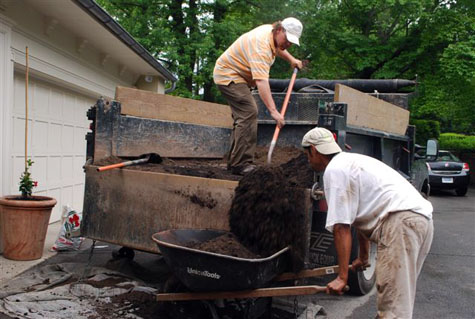I have a few clients that challenge me to be the best I can possibly be-this client is right at the top of that list. Her design ability-whether it be interiors, or parties and events, or gardening-is superb. She could have easily founded a School of Design-had she had any inclination to do so. She and her husband live in a beautifully overscaled modern house with a beautifully high pitched roof, and overscaled high-pitched dormers. (This is a landscape designers description of architecture; bear with me.)

To drive into the impossibly small front drivecourt, you would think the house was sited on a postage stamp of land. But in fact, the house is sited on a steep ravine, and hangs out over a rear yard that widens, and goes on to embrace the river. It is a big property, with incredible aerial views.

She loves gardens and flowers. Flowers and more flowers. She is a master chef-so any plan for her has to include acres of basil, and the like. OK-the challenge here-to plant a perennial garden stuffed with roses and other perennials, in a flood plane-courtesy of that river. The first order of business was a lot of drainage, and rear yard grading. When her son got married, we had to install floors in the tents and stepping stones between them at the last second-which we did. The perennial garden ramps up to a curvy modern swimming pool. So far so good.
I met her when I was young-so I had no problem moving every tree and every shrub within two days of my first work there. There were trees, shrubs and perennials placed poorly, and too many boulders. But that house was a jewel-perched out over a beautiful piece of property. The house-a beautifully designed tree house.
A house sited in the crowns of trees-how beautiful. But what if you love to cook, and grow flowers, and want to sit with your garden and family around you?
The house already had a giant deck all across the back. Stairs to the lower level had a small landing-perfect for pots. The lower level under this deck-dark, and intimate. My only suggestion-windowboxes. And lots of pots. 
We built and hung two giant windowboxes-off the deck, at the railing height. There is a whole symphony of flowers in those boxes every year-every year a new arrangement. The pots we outfitted with automatic irrigation-there are too many pots for one family and one hose.
I heard my client tell someone recently I had brought her garden upstairs for her. I had neither the words, nor the clear conscious intent to do this-but I realized when I heard her that she was exactly right.
 As I said, she is a client that encourages me to be the best I can be. I am a very lucky designer.
As I said, she is a client that encourages me to be the best I can be. I am a very lucky designer.
 Texture is such an exciting element in plants-and plantings. Defined by Wikipedia as “an identifying quality”, or the “appearance and feel of a surface”, the texture of a plant can be about its appearance. Some plants are shiny leaved; some have felted leaves. Some leaves and flowers are thin (sometimes referred to as “substance”) and some are thick and juicy looking. Some leaves are wisy and airy looking-others are big and broad-and look as though even a big wind wouldn’t disturb them. This kale is ultra-crinkled-beautiful.
Texture is such an exciting element in plants-and plantings. Defined by Wikipedia as “an identifying quality”, or the “appearance and feel of a surface”, the texture of a plant can be about its appearance. Some plants are shiny leaved; some have felted leaves. Some leaves and flowers are thin (sometimes referred to as “substance”) and some are thick and juicy looking. Some leaves are wisy and airy looking-others are big and broad-and look as though even a big wind wouldn’t disturb them. This kale is ultra-crinkled-beautiful.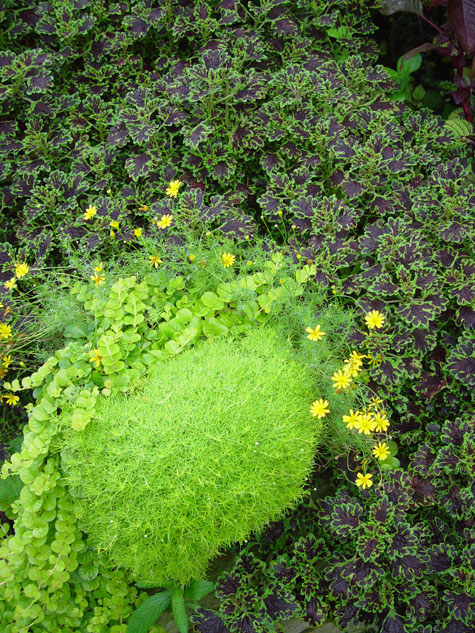 Texture can also refer to how a plant feels to the touch-who could resist touching this scotch moss? Contrasting textures can make for a lot of excitement in a planting-but even the relationship of one small texture to another can be interesting.
Texture can also refer to how a plant feels to the touch-who could resist touching this scotch moss? Contrasting textures can make for a lot of excitement in a planting-but even the relationship of one small texture to another can be interesting.  Some plantings where all the textures read similarly encourage focus on color, or mass. The choice of plants very much dictates what about a plant or planting becomes the dominant element. This box of grass, euphorbia Diamond Frost, thyme and sedum has that casual roadside weed look to it. You notice the blue of the sedum first off, as the textures of all the plants are so similar. There is a whole story here about little leaves.
Some plantings where all the textures read similarly encourage focus on color, or mass. The choice of plants very much dictates what about a plant or planting becomes the dominant element. This box of grass, euphorbia Diamond Frost, thyme and sedum has that casual roadside weed look to it. You notice the blue of the sedum first off, as the textures of all the plants are so similar. There is a whole story here about little leaves. 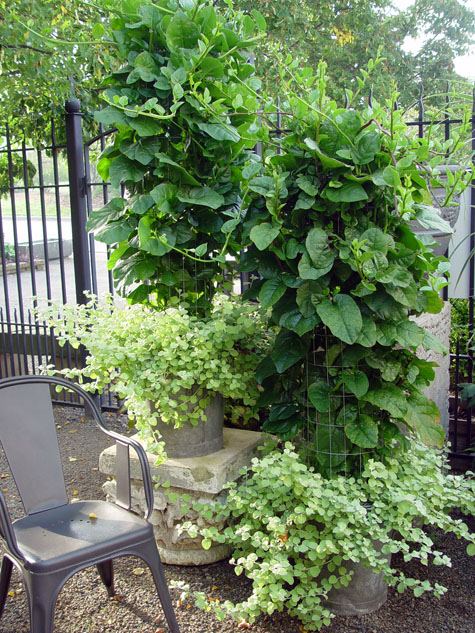 Malabar spinach has thick, substantial leaves that are glossy and wrinkled. This texture reads all the more strongly for its pairing with the diminuitive felted stems and leaves of lime licorice.
Malabar spinach has thick, substantial leaves that are glossy and wrinkled. This texture reads all the more strongly for its pairing with the diminuitive felted stems and leaves of lime licorice. 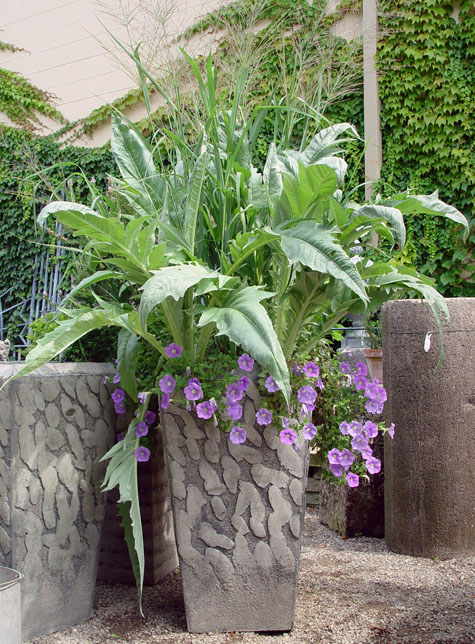 The hunky, toothy, slighting menacing leaves of this cardoon are softened by the much less architectural “Dallas Blues” panicum grass-and the so sweet blue petunias. The cardoon has a felted leaf-the panic grass is smooth and shiny. Those blue petunias are along for the ride-and soften much the architecture of the cardoon-and the pot.
The hunky, toothy, slighting menacing leaves of this cardoon are softened by the much less architectural “Dallas Blues” panicum grass-and the so sweet blue petunias. The cardoon has a felted leaf-the panic grass is smooth and shiny. Those blue petunias are along for the ride-and soften much the architecture of the cardoon-and the pot.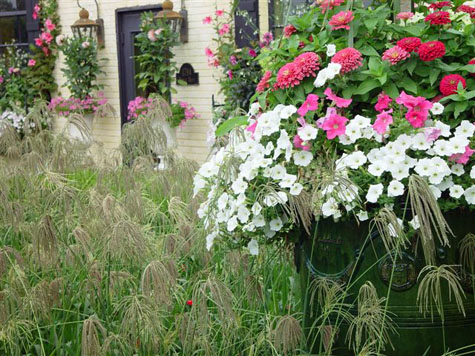 Large flowers like zinnias and petunias have a simple texture, while its companion grass has a complex, texture-like fireworks. Diametrically opposed to this delicately textured grass, caladiums and this lime dieffenbachia have leaves so thin and so wide the sun shines through them; it looks like the lights are on in this very shady spot. Identifying what about a particular plant you like will help a lot to inform your design with them. Everyone knows texture. Its the process of being conscious of it that can help make for inspired plantings .
Large flowers like zinnias and petunias have a simple texture, while its companion grass has a complex, texture-like fireworks. Diametrically opposed to this delicately textured grass, caladiums and this lime dieffenbachia have leaves so thin and so wide the sun shines through them; it looks like the lights are on in this very shady spot. Identifying what about a particular plant you like will help a lot to inform your design with them. Everyone knows texture. Its the process of being conscious of it that can help make for inspired plantings .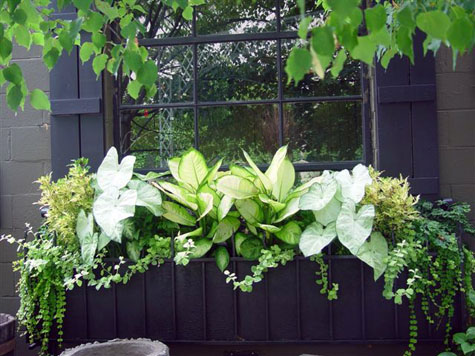
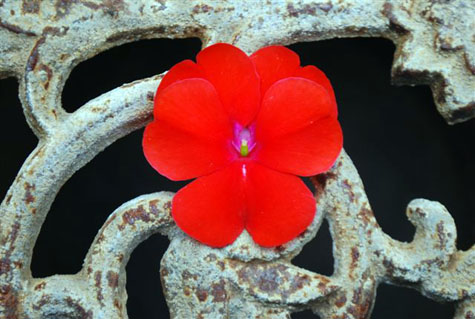


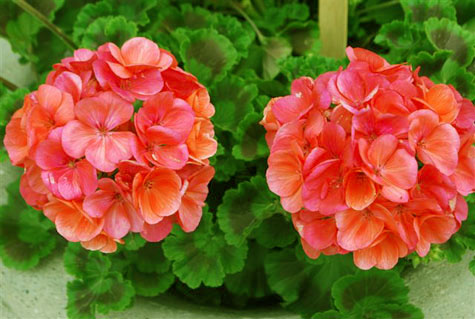

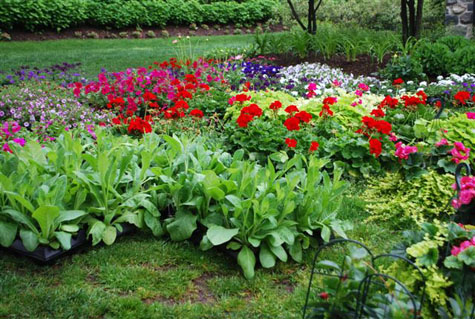 Thank heavens it has a different color scheme and feeling every year. My clients like tinkering with this as much as I do. Its plenty to plan-how many of this, and how many of that. Despite a fleet of trucks, we have plant material delivered. I invariably forget something, or think I have something reserved that’s not there. So we make changes.
Thank heavens it has a different color scheme and feeling every year. My clients like tinkering with this as much as I do. Its plenty to plan-how many of this, and how many of that. Despite a fleet of trucks, we have plant material delivered. I invariably forget something, or think I have something reserved that’s not there. So we make changes.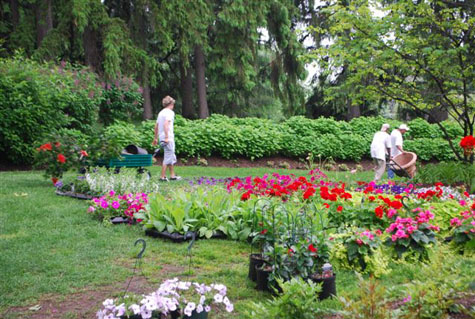 This works for us-photo copies of last years pots and beds have the new scheme written on them. I don’t need to do much for Diana after all her years, except list the plants. Should I leave something out, or have too much, she knows how to adjust.
This works for us-photo copies of last years pots and beds have the new scheme written on them. I don’t need to do much for Diana after all her years, except list the plants. Should I leave something out, or have too much, she knows how to adjust.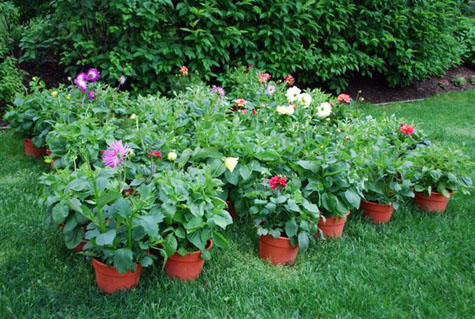 My client’s love of dahlias always presents transport troubles. This year Carlson’s greenhouse grew all the tall dahlias from cuttings. This makes the plant bushy from the start-as opposed to tall dahlias started from tubers. These short and chunky plants are easy to ship, and easier to plant. Let the sun and rain do the job of getting them tall, with those dinnerplate size flowers.
My client’s love of dahlias always presents transport troubles. This year Carlson’s greenhouse grew all the tall dahlias from cuttings. This makes the plant bushy from the start-as opposed to tall dahlias started from tubers. These short and chunky plants are easy to ship, and easier to plant. Let the sun and rain do the job of getting them tall, with those dinnerplate size flowers. Giant wirework urns are mossed and planted at the shop; these get delivered, finished, and ready to place. As they are tall, and some are viewed at a distance, I plant simply, and with good contrast.
Giant wirework urns are mossed and planted at the shop; these get delivered, finished, and ready to place. As they are tall, and some are viewed at a distance, I plant simply, and with good contrast.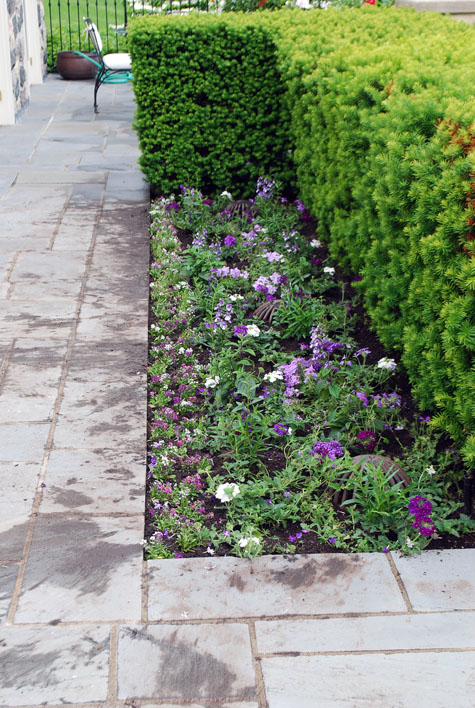 We plant beds backed up by mature and formal yew hedges with a low mix of annuals. The yews are not a backdrop; they are the feature. The little babble of trailing verbena and alyssum, heliotrope and angelonia is in stark contrast to those massive dark green yews.
We plant beds backed up by mature and formal yew hedges with a low mix of annuals. The yews are not a backdrop; they are the feature. The little babble of trailing verbena and alyssum, heliotrope and angelonia is in stark contrast to those massive dark green yews. We plant mandevillea vines, tropical hibiscus trees on standard, zinnias, New Guinea impatiens, and the dahlias-all in response to my client’s love of big flowers.
We plant mandevillea vines, tropical hibiscus trees on standard, zinnias, New Guinea impatiens, and the dahlias-all in response to my client’s love of big flowers.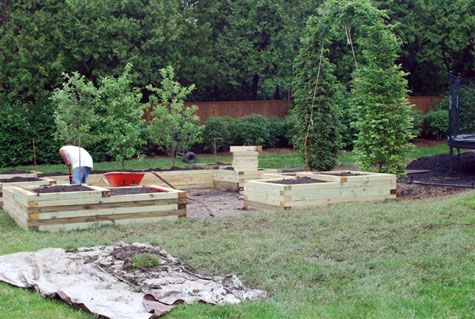 For years we have planted the vegetable garden in giant fiber pots. This year we have a formal vegetable garden under construction-the highlight of which is a European beech arbor 14 feet tall.
For years we have planted the vegetable garden in giant fiber pots. This year we have a formal vegetable garden under construction-the highlight of which is a European beech arbor 14 feet tall.